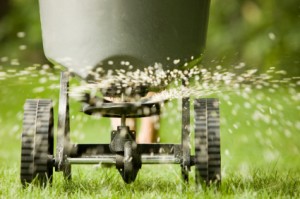For many of us, summer provides a bit of a break from lawn care with many choosing to allow their lawns to go dormant. As we are approaching the fall, it’s time to start planning your fall lawn regimen. Most lawns will need to be fertilized in the fall to help prepare them for the winter season.
The summer heat depletes your lawn of many of its nutrients and fertilizing helps restore these nutrients. It also promotes deeper root growth, which helps your lawn survive the cold of winter. Fertilizer can help your lawn green earlier in the spring with better shoot growth.
The exact time for when you should apply the fertilizer varies based on your climate and type of grass. Generally speaking, the farther north you live and the earlier the weather turns colder, the earlier you will need to fertilize to allow enough time for it to have an effect. For the cooler areas in the Northeast, fertilizing can be done in late summer. In the Deep South, you can usually wait until late September or early October.
There are many different types of fertilizers with varying combinations of ingredients. They are made up of some combination of nitrogen, potassium and phosphorous. Again, the right one for you varies based on many factors. However, a nitrogen heavy fertilizer is usually a good option for the fall.
This is just a basic overview of fall fertilizing and there are many more factors to consider. There are also other fall lawn care practices that are important in preparing for winter. As the season gets closer we will revisit this issue in more depth.
